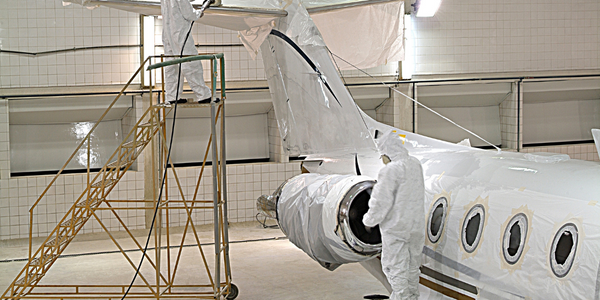Technology Category
- Sensors - Air Pollution Sensors
- Sensors - Environmental Sensors
Applicable Industries
- Aerospace
- Healthcare & Hospitals
Use Cases
- Mass Customization
- Personnel Tracking & Monitoring
Services
- Training
About The Customer
Air Canada is the largest airline in Canada, headquartered in Montreal, QC. It provides direct service to six continents and is the only international network carrier in North America to receive a Four-Star ranking from Skytrax. The company has over 30,000 employees and has cultivated a corporate culture that incorporates team members’ social needs and values into their strategic decision making. This has resulted in a wide range of opportunities to promote employee engagement in important programs and social causes, including their health and well-being program.
The Challenge
Air Canada, the country's largest airline, faced significant challenges during the COVID-19 pandemic. The aviation industry was hit hard, and Air Canada was forced to lay off nearly 50% of its employees. This resulted in increased anxiety, lowered morale, and additional pressure among the remaining employees. The situation highlighted the need for a comprehensive wellness resource that could offer practical guidance and support for all team members, from front-line employees to those working behind the scenes. The existing health and wellness program was deemed insufficient to address the current needs, necessitating a complete overhaul.
The Solution
Air Canada decided to revamp its health and wellness program to better cater to the needs of its employees during the challenging times. The company identified the need for a new technology partner to power the revamped program. They chose CoreHealth for its flexibility and customization capabilities. Sobora Duy, Air Canada’s Well-being Manager, led the initiative, knowing that he would have full control over the health technology platform to develop a program that would resonate with all levels of the organization. A new identity for their well-being initiatives was established, named 'Unlock the Best in You' (UBY), representing the program’s four health categories: Work, Mental, Physical, and Financial. Sobora and his team also invested time into producing videos and social posts to achieve a sense of connection and enhance the success of their program.
Operational Impact
Quantitative Benefit

Case Study missing?
Start adding your own!
Register with your work email and create a new case study profile for your business.
Related Case Studies.

Case Study
Airbus Soars with Wearable Technology
Building an Airbus aircraft involves complex manufacturing processes consisting of thousands of moving parts. Speed and accuracy are critical to business and competitive advantage. Improvements in both would have high impact on Airbus’ bottom line. Airbus wanted to help operators reduce the complexity of assembling cabin seats and decrease the time required to complete this task.

Case Study
Aircraft Predictive Maintenance and Workflow Optimization
First, aircraft manufacturer have trouble monitoring the health of aircraft systems with health prognostics and deliver predictive maintenance insights. Second, aircraft manufacturer wants a solution that can provide an in-context advisory and align job assignments to match technician experience and expertise.

Case Study
Hospital Inventory Management
The hospital supply chain team is responsible for ensuring that the right medical supplies are readily available to clinicians when and where needed, and to do so in the most efficient manner possible. However, many of the systems and processes in use at the cancer center for supply chain management were not best suited to support these goals. Barcoding technology, a commonly used method for inventory management of medical supplies, is labor intensive, time consuming, does not provide real-time visibility into inventory levels and can be prone to error. Consequently, the lack of accurate and real-time visibility into inventory levels across multiple supply rooms in multiple hospital facilities creates additional inefficiency in the system causing over-ordering, hoarding, and wasted supplies. Other sources of waste and cost were also identified as candidates for improvement. Existing systems and processes did not provide adequate security for high-cost inventory within the hospital, which was another driver of cost. A lack of visibility into expiration dates for supplies resulted in supplies being wasted due to past expiry dates. Storage of supplies was also a key consideration given the location of the cancer center’s facilities in a dense urban setting, where space is always at a premium. In order to address the challenges outlined above, the hospital sought a solution that would provide real-time inventory information with high levels of accuracy, reduce the level of manual effort required and enable data driven decision making to ensure that the right supplies were readily available to clinicians in the right location at the right time.

Case Study
Aerospace & Defense Case Study Airbus
For the development of its new wide-body aircraft, Airbus needed to ensure quality and consistency across all internal and external stakeholders. Airbus had many challenges including a very aggressive development schedule and the need to ramp up production quickly to satisfy their delivery commitments. The lack of communication extended design time and introduced errors that drove up costs.

Case Study
Gas Pipeline Monitoring System for Hospitals
This system integrator focuses on providing centralized gas pipeline monitoring systems for hospitals. The service they provide makes it possible for hospitals to reduce both maintenance and labor costs. Since hospitals may not have an existing network suitable for this type of system, GPRS communication provides an easy and ready-to-use solution for remote, distributed monitoring systems System Requirements - GPRS communication - Seamless connection with SCADA software - Simple, front-end control capability - Expandable I/O channels - Combine AI, DI, and DO channels








